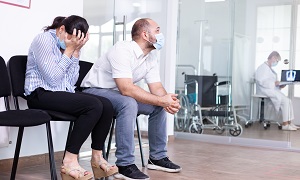Polysomnography
Polysomnography also known as a sleep study, is a test that can record data about you while you are asleep. It is used to diagnose sleep disorders. The test helps to record the oxygen levels in your blood, your brain waves, heart rate and breathing as well as your eye and leg movements during your sleep.
It is usually done within a hospital’s sleep disorder unit or sometimes at a sleep center. In addition to diagnosing sleep disorders, it can also help you adjust your treatment plan after you’ve already been diagnosed with a sleep disorder.
Purpose
A doctor can recommend polysomnography for diagnosing sleep disorders. It can help a doctor in diagnosing several sleep disorders such as:
- Sleep apnea, a disorder in which breathing stops constantly and restarts during sleep.
- Sleep-related seizure disorders
- Narcolepsy, which involves extreme drowsiness and sleep attacks during the day
- REM sleep behavior disorder, which involves acting out dreams while one is asleep
- Periodic limb movement disorder, which is also termed as restless legs syndrome, which involves flexing and extension of the legs uncontrollably while asleep
- Chronic insomnia, in which a person has difficulty falling asleep or remaining asleep
If sleep disorders go untreated, they can raise your risk of high blood pressure, depression, heart disease and stroke.
There’s also a link between sleep disorders and an increased risk of injuries related to car accidents and falling.
Preparation
Before the procedure, you may be advised to avoid any food or drinks containing alcohol or caffeine, as they can change your sleep patterns. They can also worsen a few symptoms of sleep disorders.
Before a sleep study, it is best not to nap in the afternoon. You may be asked to bathe or shower before the study. However, don’t put on gels, lotions, colognes or any kind of makeup before the test, as these might interfere with the use of electrodes.
Procedure
You will arrive at the sleep center in the evening for polysomnography and you will need to stay overnight. Occasionally the test is performed at daytime as well, for shift workers who sleep during the day. You can choose to bring items which you use for your bedtime routine and you are also free to sleep in your nightclothes.
The room where this test is performed can resemble a hotel room and during the test, it will be dark and quiet. Each room has its own bathroom and you won’t need to share the room with anyone else.
The sleeping area will be equipped with a low-light video camera and the polysomnography technologists who are monitoring you, will be able to see what’s happening in your room after the lights are out. It will also be equipped with an audio system and they will be able to talk to you as well as hear you from their monitoring area outside your room.
Once you are ready for your sleep, a technologist will place sensors on your scalp, temples, chest and legs which will be attached with a mild adhesive, such as glue or tape. The sensors will be connected by wires to a computer, but the wires will be long enough, so you won’t have trouble moving around in bed. A small clip will also be placed on your finger or ear for monitoring the oxygen level in your blood.
During your sleep, the things that will be monitored by your technologist include:
- Brain waves
- Breathing pattern
- Heart rate
- Eye movements
- Blood oxygen level
- Chest and abdominal movement
- Body position
- Limb movement
- Snoring and other noise you may make as you sleep
Throughout the night, the polysomnography technologists will be monitoring you. If you require any kind of assistance, you can talk to them at any time through the monitoring equipment. If you need to get up at any point during the night, they are able to come into the room and detach the wires.
Although it is likely that you won’t be able to sleep as comfortably at the sleep center as you would in your own bed, this will not alter the data as accurate polysomnography results don’t require a full night’s sleep.
After you wake up in the morning, the technician will be removing the sensors. You are free to leave the sleep center, and continue your daily routine the same day.
Before you leave you will be given an appointment for a follow-up visit with the doctor who recommended the test.
After the procedure
It can take up to around 3 weeks for you to receive the results of your test. A technician will be completing the data from the night of your sleep study in order to graph your sleep cycles.
The data will be reviewed by a sleep center doctor, along with your sleep history for making a diagnosis.
If the results of your polysomnography are abnormal, it can indicate one or more of the following sleep-related illnesses:
- Sleep apnea or any such breathing disorders
- Periodic limb movement disorder or any movement disorders
- Seizure disorders
- Narcolepsy or other sources of unusual daytime fatigue
For identifying sleep apnea, your doctor will be reviewing the results of the polysomnography. He will be looking for the frequency of apnea episodes that occur when breathing stops for more than 10 seconds. He will also look for the frequency of hypopnea episodes, which occur when the breathing is blocked partially for over 10 seconds.
With the help of this data, your doctor will be able to measure the results of your apnea-hypopnea index. A score lower than 5 is considered normal.
Risks
Polysomnography is a painless and non-invasive test and is relatively free from any kind of risk. However, you might experience a little irritation in the skin due to the adhesive which will be used for attaching the electrodes to your skin.


